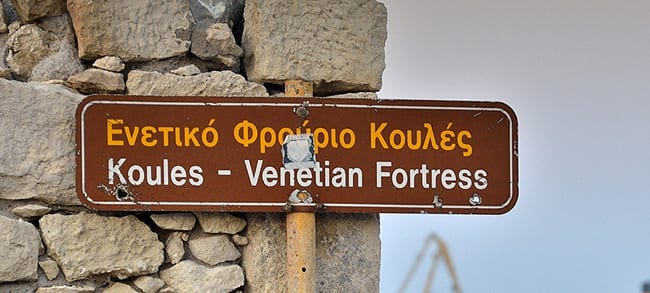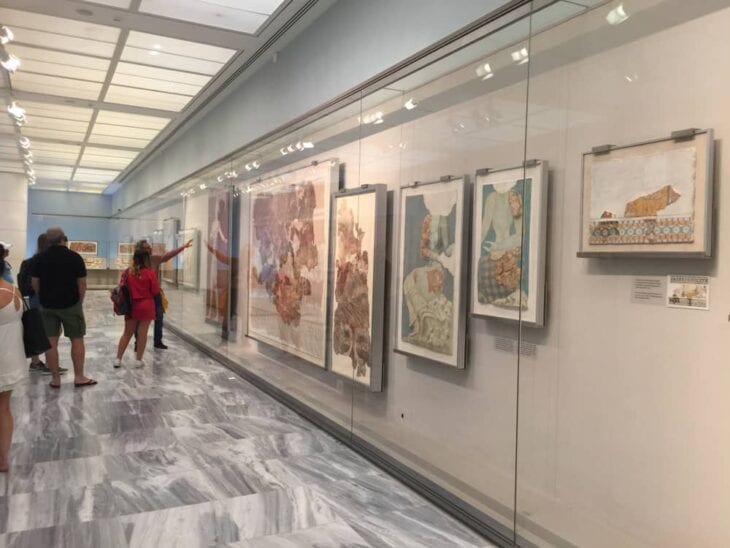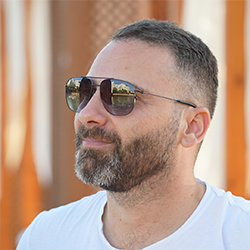Heraklion Crete: History, Tour, Cost, Travel Guide and Car Rentals
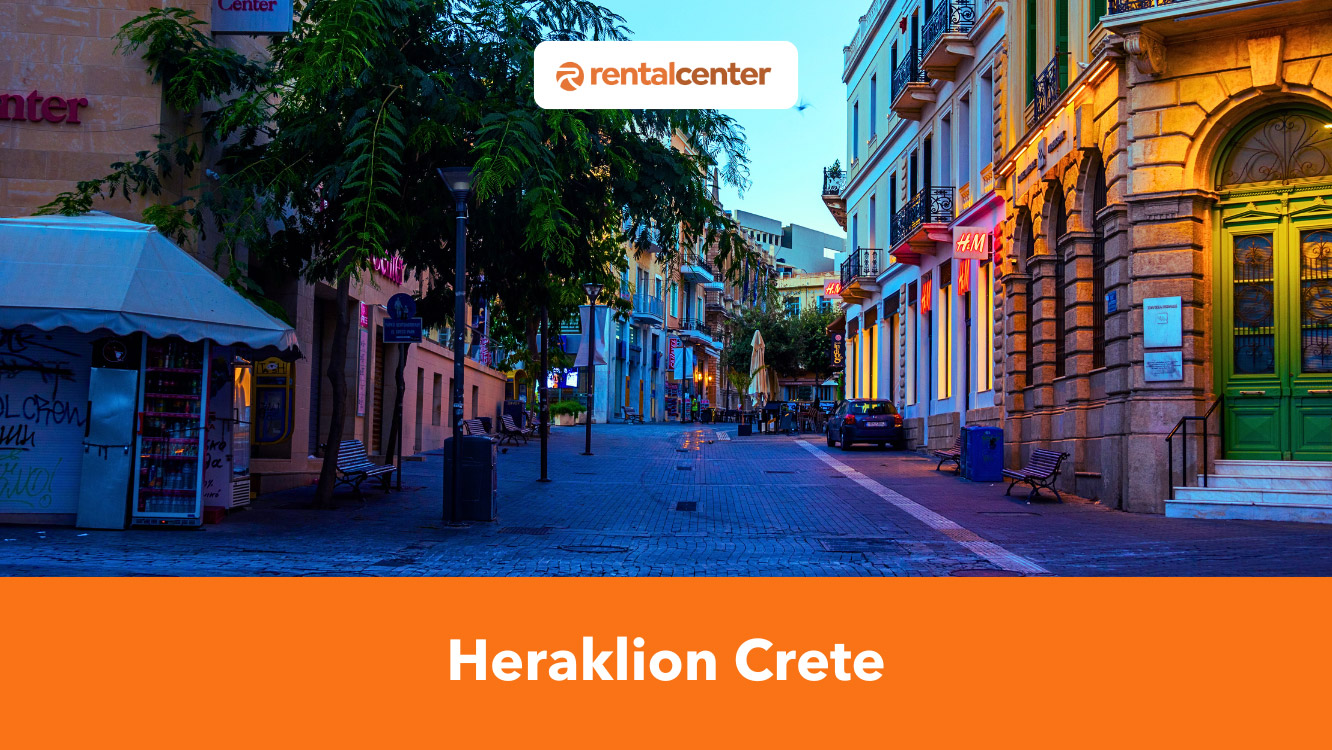
Heraklion, or Iraklion, is the capital of the island of Crete. It is Greece’s fifth-largest city. Its name derives from the ancient Roman port of Heracleum. The ancient history of Heraklion is strongly associated with the Minoan Palace of Knossos. Ancient Historians refer to Heraklion as the port of Knossos, the heart of the Minoan Civilization. The city centre is inside the fortress built by the Venetians and fortified by the Ottomans. The Heraklion Archaeological Museum is the city’s most important attraction. The Archaeological Museum of Heraklion is where the most beautiful frescoes can be seen. At present, Heraklion is Europe’s fastest-growing destination for 2017. Heraklion, today, is a modern town that offers extensive facilities that cater for all needs of its visitors. Tourists who visit Heraklion will also love hiking and walking tours around the area. One can easily explore the nearest cafés, museums, and local markets. There are several ways to explore and tour going to the Heraklion. One can opt to use a public bus or taxi.
Car rental Crete is one of the prominent car rentals on the island. Going around Heraklion is just a breeze using a rented car. It is a lot more convenient and provides more flexibility. Most car rental companies offer online booking for faster transactions. Car Rental Crete offers an easy way of renting a vehicle. One just needs to check out their website and follow the procedures. When renting a car in Crete, it is advisable to note the important factors. In order to rent a vehicle in Crete, a valid driving licence must be presented. The driver must be between the ages of 21 and 23. A credit or debit card with the driver’s name is an important requirement. Choosing an appropriate car depends on the number of passengers. Visiting Heraklion using a rented vehicle makes travelling around more convenient and practical.
What is the history of Heraklion?
Heraklion derives its name from the ancient Roman port of Heracleum. During the Minoan era, Heraklion was believed to be the port for Knossos, the centre of the Minoan Civilization. The total area of Heraklion is 244.6 km2. Heraklion’s climate is classified as warm and temperate. July is the hottest month, with an average temperature of 25 °C. January is the coldest month, while December is the wettest month. After the fall of the Minoans, Heraklion and the rest of Crete, fared poorly. There was very little development in the area. Not until the arrival of the Romans did some major construction in the area. The present city of Heraklion was founded by the Arabs in 824. The Arabs built a moat around the city and named it “Castle of the Moat”. It became the Emirate of Crete. The Saracens permit the port to be the safe haven for pirates who revolt against Byzantine shipping. In 960, the Byzantines landed in Crete, and attack the city. The Saracen people were murdered, looted, and burned to the ground. The city then was rebuilt, but still under Byzantine control. The Ottomans besieged the city during the Cretan War. It was the longest siege in history during those times. In its final phase, 70,000 Turks, 38,000 Cretans and slaves, and 29,088 Christian defenders vanished. In the most recent years, an earthquake has destroyed most homes in the city. Only 18 homes were left undamaged. In 1913, Heraklion was incorporated into the Kingdom of Greece. Heraklion became again the capital of Crete, replacing Chania, in 1971.
Where is Heraklion located?
Heraklion is located on the eastern side of Crete, between Rethymno and Lassithi. It is the administrative capital of the island of Crete and the capital of the Heraklion regional unit. Heraklion is the most popular region of Crete. The latitude of Heraklion is 35.341846, and the longitude is 25.148254.
How many people live in Heraklion Crete?
Heraklion is the fifth-largest city in Greece. It has a population of approximately 225,500. The population consists almost entirely of Cretans who speak Greek and belong to the Greek Orthodox Church. The male population is 64,551 . While the female population is 66,936 . The total kid’s population of Heraklion is 5,606 . The population of older people is 39,414.
What to know before going to Heraklion?
Heraklion, Crete’s most renowned region, becomes especially crowded during peak tourist seasons. Annual temperatures vary from 9 ℃ to 29 ℃ (48 ℉ to 84 ℉), occasionally reaching 32 ℃ (89 ℉) in summer, so lightweight clothing is recommended. Beyond beach activities, Heraklion offers hiking, which requires suitable footwear. Car rentals provide a convenient way to explore local sights, while numerous dining options and lively clubs await in tourist areas like Malia, Stalis, and Hersonissos. There are several alternative things to do in Heraklion apart from beach holidays.
What are the facts about Heraklion?
Listed below are the facts about Heraklion.
- Heraklion is the 5th largest city in Greece. One of the many interesting facts about Heraklion is that it is Crete’s capital city. Heraklion is the fifth-largest city in Greece. Its area stretches across 264 square miles. It is home to more than 225, 000 people. Heraklion is the second most visited city in Greece.
- Heraklion became Crete’s Capital in 1971. The city’s name, Heraklion, derives from the ancient Roman port of Heracleum. Heraklion became the Capital of Crete in 1971. The city became part of the international protectorate of Crete from 1897 to 1913.
- Heraklion is home to some of the island’s oldest buildings. One of the oldest buildings is situated in the centre of Heraklion town. The Venetian Loggia. The Venetian Morozini designed the building around 1620. The newly-renovated building is now home to the Town Hall.
Is Heraklion safe?
Heraklion is an extremely safe city to visit. With plenty to see and do, the locals are also very welcoming and friendly. Low-level petty crimes exist but are rare. One can freely explore the city and feel quite secure and relaxed. Tourists especially must be mindful of their safety whenever visiting a foreign land. The risk of serious robbery and armed attacks is rare in Heraklion. Women travelling alone can feel safe and secure in Heraklion. However, keeping an eye on one’s belongings and avoiding walking late at night alone are just a few of the sensible things to consider when travelling.
What is the best season for visiting Heraklion?
The best season for visiting Heraklion is during summer. Heraklion’s temperatures reach daily highs of 30˚C, perfect weather to visit beaches and sunbathe. Heraklion has a warm, Mediterranean climate with hot, dry summers and mild winters. When visiting Heraklion, avoid the rainiest month of December.
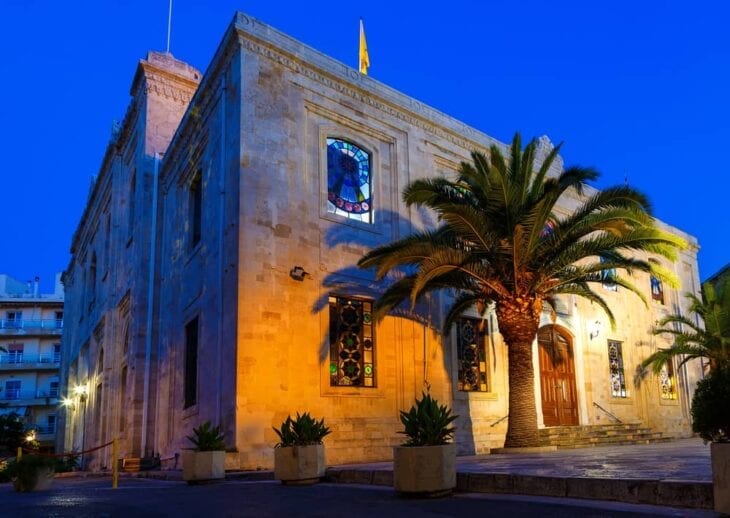
Is Heraklion expensive?
No, Heraklion is not considered expensive, either for living or visiting. Heraklion’s cost of living for locals and expats averages 1,078 € (£932, $1,137) per month, placing it 4,779th among 9,294 global cities. A median after-tax salary of 928 € (£803, $980) covers roughly 0.9 months of expenses for locals and expats. Tourists find good value, with budget stays ranging from 356 € to 463 € (£308-£400, $376-$489) weekly, mid-range at 758 € (£656, $800), and luxury at 1,421 € (£1,229, $1,500). Housing costs include 430 € (£372, $453) monthly rent in the city center and 352 € (£305, $371) outside. Internationally, Heraklion is 1.58 times cheaper than Washington, 1.88 times cheaper than New York City, and 1.25 times cheaper than Houston. Seasonal price increases in 2025 are expected due to a 2.3% economic growth, new port fees, and higher lodging taxes. Daily expenses include 1.35 € (£1.17, $1.42) for transport, 12 € (£10, $12.66) for a basic lunch, 3.64 € (£3.13, $3.84) for coffee, and 422 € (£365, $445) monthly for groceries.
Heraklion’s cost of living is ranked 4,779th out of 9,294 global cities, according to livingcost.org , with a median after-tax salary of 928 € (£803, $980) covering approximately 0.9 months of living expenses. Housing costs in Heraklion are moderate, with rent for a one-bedroom apartment in the city center at 430 € (£372, $453) per month and 352 € (£305, $371) per month outside the center; purchase prices in the city center average 3,607 € (£3,122, $3,803) per square meter. Daily expenses in Heraklion include 1.35 € (£1.17, $1.42) for a local transport ticket, 12 € (£10, $12.66) for a basic lunch menu, 3.64 € (£3.13, $3.84) for coffee, and 422 € (£365, $445) per month for groceries per person. For tourists, Heraklion offers good value, with budget travelers spending 356 € to 463 € (£308-£400, $376-$489) per week, comfortable stays costing around 758 € (£656, $800) per week, and luxury accommodations requiring about 1,421 € (£1,229, $1,500) per week. Compared internationally, Heraklion is 1.58 times cheaper than Washington, 1.88 times cheaper than New York City, and 1.25 times cheaper than Houston. Seasonal price variations for 2025 may see slight increases due to 2.3% economic growth, new port fees, and higher lodging taxes during peak seasons.
Do you need to book in advance to visit Heraklion?
No, advance booking is not needed to visit Heraklion, but arriving early helps avoid crowds. During peak season in July and August, advance booking is ideal. Arriving before 9 am generally means no queues, and morning visits are preferable before the day’s heat sets in. Many tours offer prebooking for specific views or accommodations, though visitors can pay directly at the ticket office. Ticket lines are usually short, and parking is easy and free.
What is the best vehicle for visiting Heraklion?
The best vehicle for visiting Heraklion is a Fiat 500c Cabriolet. With so much to see and do in Heraklion, the best way to explore the busy city is by driving a convertible car. It will make exploring the city more fun with its cute and retro look. The Fiat 500c Cabriolet has the latest technology like automatic climate control, auto-dimming rearview mirror, and heated front seats, to make driving more comfortable. Travellers driving cars going to Heraklion will be free from schedules to explore historic sites and old villages. Crete Car Rental is one of the many car rental companies that offers the best affordable prices. They have a website, wherein one can easily reserve a booking by following simple procedures. Car Rental Crete provides many options, especially for tourists who wish to rent a car to go around the island and visit tourist attractions.
Can you rent a car going to Heraklion?
Yes, you can rent a car to go to Heraklion. Renting a car is a great option for going to Heraklion. Car rentals will give one the freedom, and flexibility to travel, how and when they want to visit a place. There are several car rental companies in Heraklion that offer the best prices.
What are the factors to consider before renting a car in Crete?
Listed below are the factors to consider before renting a car in Crete.
- Insurance. Car rental insurance protects a passenger against the cost of damage when renting a car. Crete car rental includes insurance for Collision Damage waiver, and a driver’s credit or debit card is required as a guarantee.
- Driver’s age. The legal age requirement to drive in Crete is between 18 years old. One must have a valid driving licence.
- Driver’s gender. Both women and men can drive in Crete. As long as the driver is of the legal age of 18, driving is allowed in Crete, regardless of gender.
- Car type. One must learn how to choose the right car to rent in Crete. Travelling with groups or with members of the family requires a much bigger car. Car rental companies in Crete offer a variety of cars to choose from. Choosing a smaller car is best when driving in Crete. The reason for that is that some Greek roads are narrow.
- Documents needed for renting a car. One important document needed for renting a car is a valid driving licence. However, a credit or debit card with the driver’s name is also one of the requirements in Crete car rental.
How much does a car rental in Crete cost?
Crete offers convenient car rentals, with daily rates averaging €30-€40. Weekly rentals typically cost around €250, while weekend rentals average €78. Rental costs vary based on passenger capacity, itinerary, car type, location, and duration. Car rental companies in Crete provide a range of vehicle options to suit diverse customer preferences.
What is the contribution of Heraklion to Crete’s Tourism?
The tourism industry in Greece, particularly in Crete, is the fastest-growing market, achieving a 60% growth over six years. Crete’s rich cultural heritage and reputation for safety attract tourists worldwide. Heraklion, a notable city in Crete, offers attractions like the historical Knossos site, diverse museums, art exhibits, and numerous dining options.
Is there a local market in Heraklion?
Yes, Heraklion has the Heraklion Central Market on 1866 Street, known for family-owned shops offering local products, souvenirs, and artisanal foods like paximadia and charcuterie. The market includes a fish section with fresh catches from local fishermen. Weekly “Laiki” markets allow direct purchases from local farmers, cheesemakers, vintners, and beekeepers, enriching the experience of Crete’s culture and flavors. The Heraklion Fish Market, part of Heraklion Central Market, offers fresh fish and seafood caught by local fishermen. Visiting the Heraklion markets allows you to enjoy a closer connection to the land and culture of Crete.
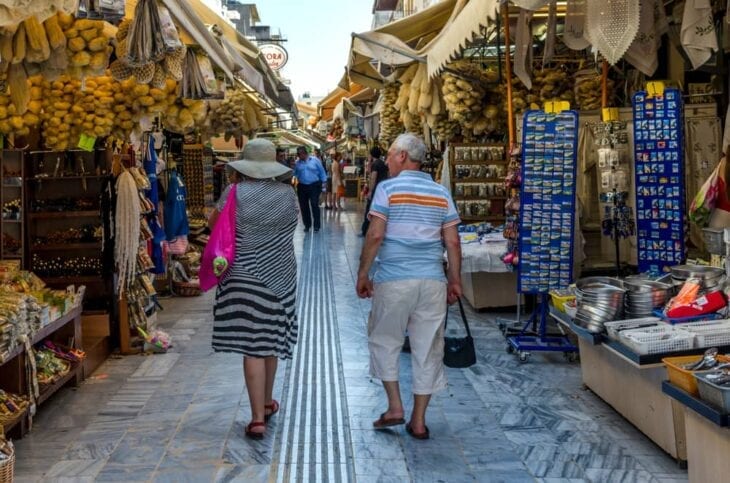
What are the nearest attractions in Heraklion?
Listed below are the nearest attractions in Heraklion.
- The Palace of Knossos. The Palace of Knossos is located south of modern-day Heraklion. The palace covers about 150,000 square feet and was surrounded by an old town. It was the ceremonial and political centre of Minoan Civilisation. The Palace of Knossos is well worth a visit when in Crete. When visiting Heraklion, one must visit the Knossos Palace, Crete’s top Attractions & Things to Do in Heraklion.
- Koules Fortress. The Koules Fortress, or Rocca Al Mare, is located at the entrance of the old port of Heraklion, Crete. It was built by the Venetians in the early 16th century. The fortress is made up of two parts. A high rectangular section, and a lower semi-elliptical section. A lighthouse tower is located in the northern part of the fortress. At present, The Koules Fortress is open to visitors and is commonly used for cultural events.

- Heraklion Archaeological Museum. The Heraklion Archaeological Museum is one of the most important and oldest museums in Greece. It has a unique Minoan collection which includes masterpieces of Minoan art. The Heraklion Archaeological Museum houses representative artefacts from all periods of Cretan prehistory and history. It is located in the heart of the town and was built between 1937 and 1940 by architect Patroklos Karantinos.

What are the best restaurants in Heraklion?
Listed below are the best restaurants in Heraklion.
- Avli. Avli, a family-owned restaurant established in 2017 in Crete, is celebrated as one of the top dining spots on the island. Open Monday to Saturday, Avli serves authentic Cretan dishes, offering a warm, homey ambiance for those seeking genuine local cuisine and drink options. The best restaurant to eat and drink in Heraklion is Avli.
- Xalavro OpenBar. Xalavro OpenBar was established from the ruins of an old house, located in Heraklion, Crete. It is a perfect place for drinks, a meeting point, and coffee dates. It was named one of the best cocktail bars in Heraklion, Crete and Greece. The open bar offers a wide variety of dishes from the Mediterranean with flavours of Asia, brunch dishes, finger food and street food, and several cocktails.
- I Vardia restaurant. A Greek restaurant in Heraklion that serves lunch and dinner. I Vardia Restaurant’s cuisines include seafood, Mediterranean, Greek, Grill, and Healthy food. It is a favourite place for locals to hang out. I Vardia Restaurant offers great seafood options.
What is the nightlife in Heraklion?
Heraklion is a lively city with various nighttime activities for every traveller. From exploring historic sites like Eleftherias Square and Lion Fountain to enjoying local and international dishes at restaurants and bars, there is something for everyone. Experience Heraklion’s nightlife at pubs, bars, and clubs along Milatou Street and Leoforos Sofokli Venizelou or immerse yourself in Cretan culture at the Summer Arts Festival and Cretan Folklore Night. For a tranquil evening, visit Karavolas Park, featuring an illuminated fountain and family-friendly amenities.
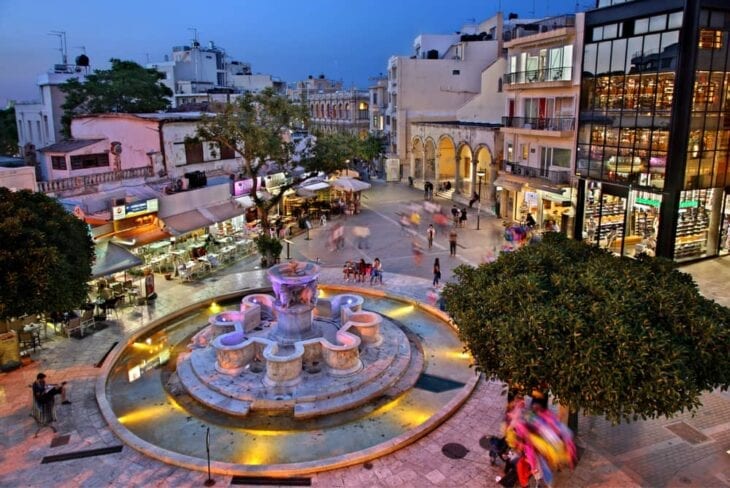
What are the movies about Heraklion?
Listed below are the movies about Heraklion.
- Immortals (2011). A 2011 American fantasy action film starring Henry Cavill. Immortals use motifs of the Greek myths of Theseus, the Minotaur, the return of the Heraclids, and the Titanomachy. The plot begins when the twelve Olympians, who imprisoned the Titans near Mount Tartarus, lose the mighty Epirus Bow. King Hyperion, the King of Heraklion, searches for the bow to release the Titans. Hyperion plans to capture the virgin oracle Pahedra, to use her dreams and visions to find it. The film was directed by Tarsem Singh.
- The Two Faces of January (2014). The Two Faces of January is a thriller film released in 2014. The film was based on Patricia Highsmith’s 1964 novel The Two Faces of January stars Viggo Mortensen, Kirsten Dunst, and Oscar Isaac. The Two Faces of January. Iraklion, or Heraklion, is one of the main cities where the story evolves.
- The Moon-Spinners (1964). The Moon-Spinners is an American mystery film released in 1964. The film was about a jewel thief hiding on the island of Crete. It was based upon a 1962 suspense novel by Mary Stewart.
How does Heraklion look on the map?
Find an image of Heraklion map below.
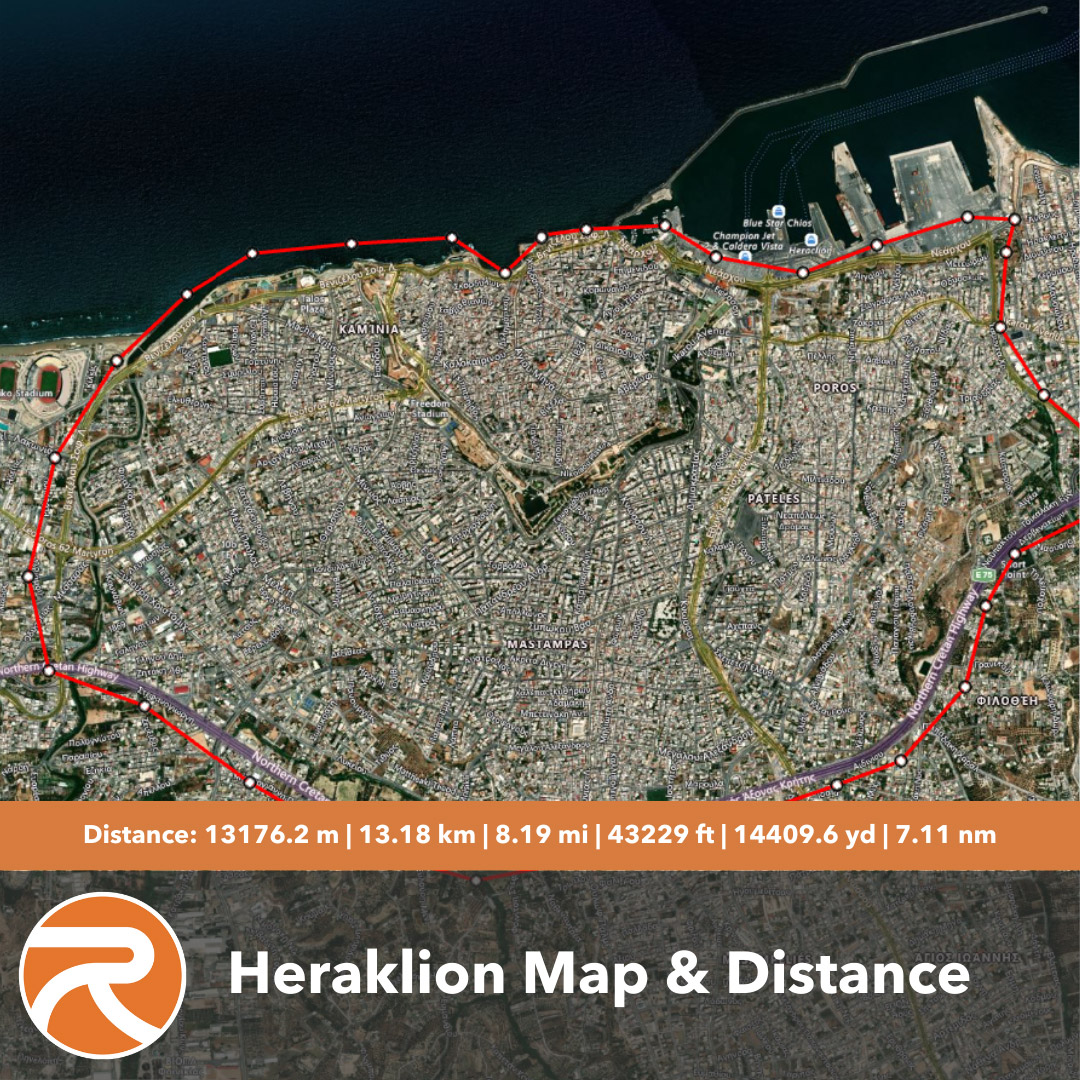
Why is Heraklion considered an archaeological site?
Heraklion is considered an archaeological site because there are several archaeological sites within the area. One of them is the Heraklion Archaeological Museum carries the majority of the finds from Knossos and other Minoan sites, in Crete. Knossos is recognised for its Bronze Age archaeology. Some believe that Knossos could be Europe’s oldest city. The site of Knossos was discovered in 1878 by Minos Kalokairinos. The excavation was started in 1900 by Sir Arthur Evans. The size exceeded sir Evans’ projection, as did the finding of two ancient calligraphy called Linear A and Linear B.
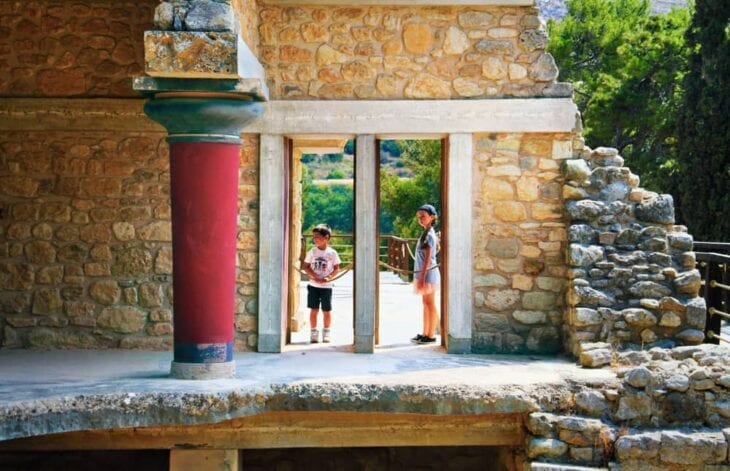
Is Heraklion in UNESCO World Heritage Sites?
No, Heraklion is not included in UNESCO World Heritage Sites. However, Knossos has completed the necessary steps required for the inclusion of the archaeological site of Knossos in the UNESCO World Heritage Sites in Crete. UNESCO had agreed to include Knossos on the list on 2003. Knossos is located south of modern-day Heraklion, near the north coast of Crete.
Last updated on January 5th, 2025








